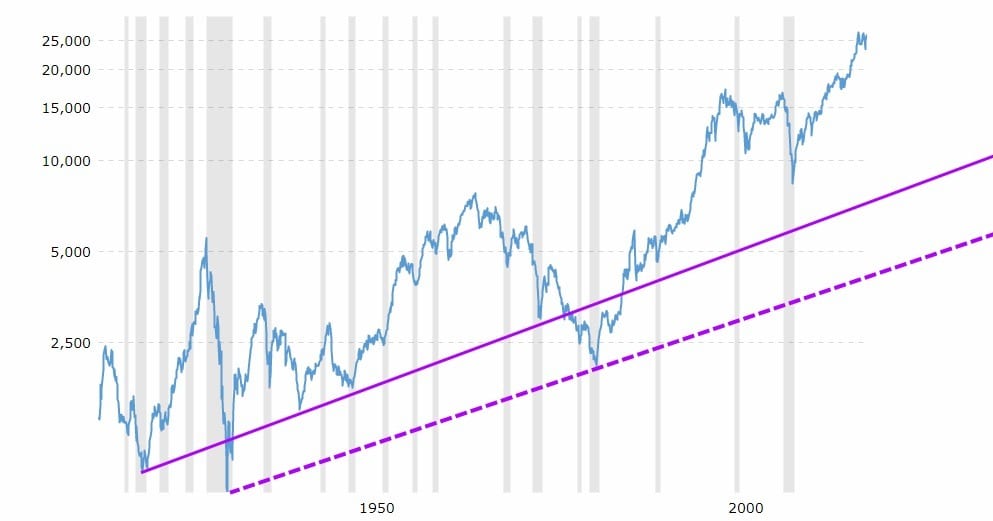
Contrarian Investing: Mastering the Art of Rebellion
Feb 11, 2025
Introduction
Contrarian investing is not a strategy—it’s an act of defiance, a rebellion against the herd, a calculated war against mass delusion. The financial battlefield is ever-changing, and those who cling to outdated doctrines are swept away like relics of a forgotten age. Static thinking is the graveyard of wealth; adaptation is its lifeblood.
Many self-proclaimed contrarians are nothing more than masqueraders—”fashion contrarians” who strut with bravado when markets are calm but crumble into conformity the moment fear grips the masses. When uncertainty strikes, they abandon their so-called independence and charge headfirst into the slaughterhouse of mainstream sentiment, like panicked bandits fleeing the hounds of hell.
True contrarians don’t just reject the consensus; they understand why the crowd moves as it does. They are students of mass psychology, architects of perception, and masters of controlled dissent. To navigate the markets without grasping psychological manipulation—the relentless “war on perceptions”—is to march blindfolded into battle. The forces shaping investor sentiment are not random; they are engineered, designed to trap the unsuspecting and reward the ruthless.
At the Tactical Investor, we do not ignore this reality—we embrace it. The path of the contrarian is not for the faint of heart, but for those who dare to think beyond illusion, the rewards are immense.
Contrarian Insight: A Critical Viewpoint for Smart Investors
All backbreaking corrections should be embraced, for the Fed will never allow this market to crash—case in point, the backbreaking so-called market crash of 1987 and the even scarier one of 2008. “Buy the noise and sell” the crap for the trend is always your friend unless you fight it.
Dare to Diverge: Contrarian Wisdom for Extraordinary Returns
Contrarian investing is not just a strategy—it’s an ironclad philosophy, a calculated rebellion against the herd. The road to extraordinary returns is paved with courage, conviction, and an unwavering ability to see opportunity where others see despair.
The masses chase trends, buying high and panicking when prices collapse. Contrarians do the opposite. They seize assets when fear rules the market and cash out when euphoria blinds the crowd. This is not reckless gambling—it’s precision warfare, a battle of patience and intellect against mass hysteria.
Legendary investor Warren Buffett warned, “You pay a very high price in the stock market for a cheery consensus.” The moment the crowd agrees, the profit potential evaporates. Sir John Templeton went even further: “The time of maximum pessimism is the best time to buy.” When the world screams disaster, the true investor whispers opportunity.
Mastering the Art of Contrarian Investing
- Timing is Everything: It’s not just about finding undervalued assets—it’s about knowing when the tide will turn. Market cycles are driven by emotion, and a true contrarian reads fear like a seasoned general studies the battlefield.
- Research is Power: A temporary setback is different from a permanent decline. Contrarians don’t buy blindly; they dig deep, looking for assets unfairly punished by short-term hysteria.
- Patience is a Weapon: The market takes time to recognize value. The strongest contrarians hold firm, waiting as the crowd slowly wakes up to what they saw all along.
- Risk is Inevitable—control is Key: Every investment carries risk, but contrarians control it. They diversify, manage exposure, and have an exit strategy before making a move.
In a world of speculation and noise, contrarian investing rewards those who dare to diverge. It is the strategy of those who don’t just seek profit—they seek domination over the blind impulses of the market.
Mass Psychology: The Foundation of Contrarian Investing
Markets don’t move on logic—they move on emotion. Fear and greed are the invisible hands guiding price action, creating bubbles, crashes, and opportunities for those who can detach from the madness.
Contrarian investing is not about chasing headlines or balance sheets alone. It is about understanding the psychology of the herd—when they panic, grow overconfident, and are at their most vulnerable.
Warren Buffett captured this truth ruthlessly: “Be fearful when others are greedy, and be greedy when others are fearful.” This is not a poetic sentiment—it is the fundamental law of market cycles.
When Sir John Templeton declared, “To buy when others are despondently selling and to sell when others are avidly buying requires the greatest fortitude and pays the greatest ultimate rewards,” he was exposing a truth few investors can stomach. The price of success is the ability to stand alone against the weight of public opinion.
The Emotional Cycles That Create Opportunity
- Panic Selling: When markets plunge, investors don’t think—they react. They dump stocks out of fear, creating fire-sale prices for those who remain rational.
- Irrational Exuberance: The crowd loves a rising market. They overpay, pushing valuations into the stratosphere before gravity takes hold. This is where contrarians exit.
- The Desperation Bottom: At maximum pessimism, the last fearful sellers surrender. This is the contrarian entry point, where assets are discarded at absurdly low prices.
The War on Perception
The media, institutions, and financial elites understand mass psychology. They fuel fear when they want cheap assets and push euphoria when they want to sell at inflated prices. Contrarians see through the deception, using mass psychology as a weapon rather than being its victim.
Master the psychology of markets, and you master the markets themselves.
Contrarian Investing Principles: A Strategic Approach
Contrarian investing is not about blind defiance—it’s about strategic defiance. Success requires principles, discipline, and an unshakable framework for decision-making.
1. Value Investing: The Bedrock of Contrarianism
Contrarians don’t buy because prices are low—they buy because value is mispriced. They identify strong assets unfairly discarded by emotional selling. Benjamin Graham, the father of value investing, put it bluntly: “The intelligent investor is a realist who sells to optimists and buys from pessimists.”
2. Patience: The Ultimate Weapon
The market will not reward contrarians overnight. Investors must have the fortitude to hold positions while the masses mock them—until sentiment shifts and reality catches up.
3. Risk Management: Defying the Crowd Without Destroying Capital
- Never bet everything on one position.
- Set clear entry and exit points before investing.
- Always factor in market manipulation and external shocks.
4. Contrarian Indicators: The Roadmap to Opportunity
- Extreme Sentiment: When greed dominates, it’s time to exit. When despair rules, it’s time to buy.
- Insider Buying: If company executives are buying aggressively, they know something the market doesn’t.
- Media Hysteria: When headlines scream doom, real contrarians pay attention—because the opportunity is near.
Contrarian Wisdom: Fierce Insights from Investing Mavericks
In a world where herds rush blindly toward the cliff’s edge, the contrarian stands apart—measured, unyielding, and razor-sharp. They don’t just follow; they lead. They don’t echo; they innovate. Below, the titans of contrarian investing—Sir John Templeton and Sam Zell—deliver timeless, unapologetic truths for anyone daring to chart their course in the turbulent seas of finance.
Sir John Templeton: The Architect of Rational Courage
- “To buy when others are despondently selling and to sell when others are greedily buying requires the greatest fortitude and pays the greatest reward.”
“Bull markets are born on pessimism, grown on scepticism, mature on optimism, and die on euphoria. The time of maximum pessimism is the best time to buy, and the time of maximum optimism is the best to sell.”
“If you want to perform better than the crowd, you must do things differently from the crowd.”
“Invest at the point of maximum pessimism.”
“The four most dangerous words in investing are, ‘This time it’s different.’”
Markets change. Human folly doesn’t. Ignore anyone who promises a fairy tale of invincibility.
Sam Zell: The Contrarian Gladiator
- “I am very focused on understanding the downside.”
The contrarian doesn’t gamble—they calculate. Know your risks before dreaming of rewards. - “If everyone is going left, look right.”
Wisdom is found in defiance. The herd is rarely right; your edge lies in going the other way. - “I have always tried to be a contrarian. I have always tried to buy things when nobody else wants them and sell them when everyone else wants them.”
Contrarianism isn’t a trend; it’s a discipline. Embrace it, or prepare to settle for mediocrity.
The Contrarian’s Manifesto: A Call to Arms
Contrarian investing is not for the weak. It is a battlefield, a war against mass delusion, where only those with iron discipline and razor-sharp intellect thrive. This is not about luck—it’s about mastery. It’s about standing firm when fear rips through the market, about striking when others cower, about seeing what the herd is too blind to grasp.
Let the masses chase illusions, intoxicated by hype and hysteria. The contrarian hunts in silence, waiting for the moment to strike, exploiting their ignorance for maximum gain. This is not just investing—it is psychological warfare, a relentless pursuit of truth buried beneath deception and panic.
Are you ready to abandon the herd and claim your edge? The road is brutal, the risks are real—but so are the rewards. The timid will perish in the chaos. The bold will rise, prepared, relentless, and victorious.
Other Articles of Interest















